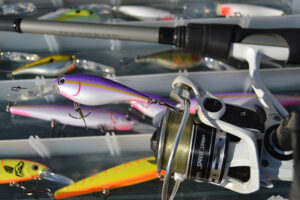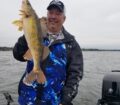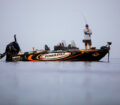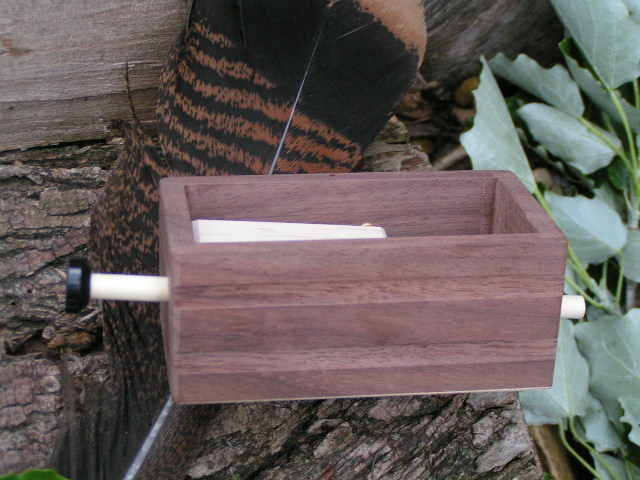By Bob Jensen
Fishing the Midwest Fishing Team

(photo by Bob Jensen) A 6 to 7 foot medium action spinning rod is a good choice for casting lightweight crankbaits to shallow water walleyes.
Through the years I’ve had the opportunity to fish with a lot of different anglers. Something that almost always caught my attention when I climbed into their boat was the number of fishing rods they had out. Some of the best anglers appeared to be some of the most basic anglers. They would only have a couple of rods out and rigged.
They knew the species of fish that we would be after and the techniques that we would use to catch them. But they always had the most appropriate rod to employ those techniques. In a way, we can compare fishing rods to golf clubs. There is a type of rod and a type of golf club for the various applications.
The golf club/fishing rod comparison is a fair one. A golfer uses a particular club for a particular situation and an angler uses a particular rod for a particular situation. A golfer doesn’t use a putter to tee off, and an angler doesn’t use a musky rod to fish for crappies. At least they don’t if they want to tee off effectively or catch crappies effectively.
Light action rods work best when light line and smaller lures are going to be employed. A crappie angler can certainly tie a sixteenth ounce jig to a heavy rod spooled with heavy line, but it won’t cast well and the ability to feel the light take of a crappie will be nonexistent.
Along those same lines, a musky angler would not catch a musky by attaching a musky lure to a rod used for crappie fishing. If the line or rod didn’t break when the bait was cast, it would when the musky hit the bait.
Walleye anglers who use a lot of jig and live bait rigs will do well with rods in a medium light to medium heavy action in the six to seven foot lengths. Most walleye chasers have personal preferences for action and length for jigging and rigging, but those preferences usually fall into the previously mentioned actions and lengths. Walleye anglers who troll a lot will often want a longer rod with a lighter tip and more power farther down the rod. When trolling with several rods on each side of the boat, shorter rods go toward the back of the boat, longer rods toward the bow.
The bass world is a place of lots of techniques, and rod actions from medium to very heavy are part of the arsenal. On some days on some waters a shaky head worm or drop shot rig on a medium action rod with 8 pound test line will catch bass. On the same body of water on the same day a weedless frog or jig worked through the thickest cover on a heavy action rod and 65 pound test line will be best employed. Bass anglers know that to be successful consistently, they need to use the rod that will enable them to achieve that success.
With all that said, an angler doesn’t need a bunch of rods to catch fish or to enjoy fishing. And they don’t need to spend an excessive amount of money on a rod. Championship walleye winner Drake Herd has access to any rod that he wants, but often you’ll see him hanging onto a Lew’s Speed Stick Walleye rod. This line up of rods has all the actions that a walleye angler desires, and they’re very affordable.
Now is the time to visit a sporting goods store to hold and shake a variety of rods to determine which one will best fit your needs. When you find the rod that best compliments your fishing techniques, you’ll understand why you don’t tee off with a putter and why you don’t jig for crappies with a musky rod.















